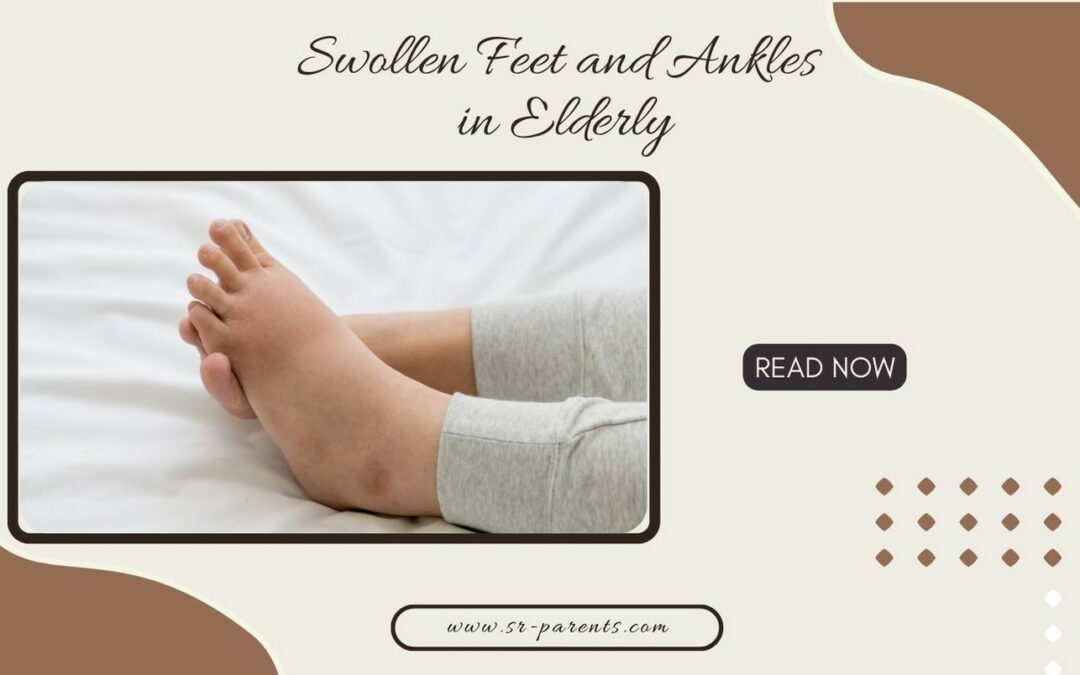Painful and often indicating developing health problems, swollen feet and ankles in elderly loved ones troubles many. Finding the cause helps to find the best treatment.
Contents
Swollen Feet and Ankles in Elderly: Causes, Symptoms, and Treatment
 Image Source: FreeImages
Image Source: FreeImages
Swollen feet and ankles are common issues that affect older adults. It can result from underlying medical conditions, including heart, liver, kidney, or vascular diseases. Swollen feet and ankles can cause discomfort, pain, and difficulty walking. This article will discuss the causes, symptoms, and treatment options for swollen feet and swollen ankles in elderly individuals.
What Causes the Swelling in the Elderly?
Various underlying medical conditions, including heart, liver, kidney, and venous insufficiency, can cause swollen feet and ankles in elderly individuals. Heart disease can cause fluid buildup in the legs and feet, leading to swelling. Liver disease can cause a buildup of toxins in the blood, leading to fluid accumulation in the legs and feet. Kidney disease can cause a buildup of excess fluid and waste in the body, leading to swelling in the legs and feet. Venous insufficiency occurs when the veins in the legs are not functioning correctly, leading to fluid accumulation in the legs and feet. Other factors that can contribute to swollen feet and ankles in elderly individuals include certain medications, pregnancy, obesity, and prolonged periods of standing or sitting.
Related: Inflammation in Elderly People
Symptoms of Swollen Feet and Ankles in Elderly
The primary symptom of swollen feet and ankles in elderly individuals is swelling of the legs, feet, and ankles. The swelling can be accompanied by pain, discomfort, and difficulty walking. In severe cases, the skin on the legs and feet can become stretched and shiny, and blisters can form. Swollen feet and ankles can also cause a feeling of heaviness or tightness in the legs.
Complications to Watch For
Swollen feet and ankles in elderly individuals can lead to various complications, including skin ulcers, infections, and decreased mobility. The skin on the legs and feet can become stretched and shiny, increasing the risk of skin ulcers and infections. Swollen feet and ankles can also cause a decreased ability to walk and perform daily activities, reducing the quality of life.
Aside from it, a CVI or Chronic Venous Insufficiency is a prevalent medical condition frequently associated with ankle swelling and swollen feet and ankles in older individuals. CVI occurs when the veins in the legs have difficulty returning blood to the heart, leading to poor circulation. As a result, fluid can accumulate in the lower extremities, causing swelling in the legs, feet, and ankles. This swelling can be accompanied by pain, discomfort, and difficulty walking, which are particularly common issues in older adults.
Diagnosis of Swollen Feet and Ankles in Elderly
To diagnose swollen feet and ankles in elderly individuals, a healthcare provider will perform a physical examination and review the individual’s medical history. The healthcare provider may also order imaging tests, such as an ultrasound or X-ray, to evaluate the underlying medical conditions causing the swelling.
Treatment Options
The treatment options for swollen feet and ankles in elderly individuals depend on the underlying medical condition causing the swelling. Treatment options may include medications to improve heart, liver, or kidney function, compression stockings to improve circulation, or diuretics to reduce fluid buildup in the body. In severe cases, the healthcare provider may recommend surgery to remove excess fluid or repair damaged veins. Surgery is typically reserved for individuals with severe swelling not responsive to other treatments.
Home Remedies to Try
In addition to medical treatment, several home remedies can help reduce swelling in the legs and feet. These include:
- Elevating the legs above the heart for 30 minutes several times a day
- Applying cold compresses to the affected area
- Soaking the feet in Epsom salt
- Drinking plenty of water to stay hydrated
- Reducing salt intake to prevent fluid retention
Video Credit: @doctors-circle
Lifestyle Changes to Manage Swollen Feet and Ankles in Elderly
Lifestyle changes can also help manage swollen feet and ankles in elderly individuals. These include:
- Maintaining a healthy weight
- Engaging in regular physical activity to improve circulation
- Avoiding prolonged periods of standing or sitting
- Wearing comfortable, supportive shoes
- Avoiding tight clothing that can restrict circulation
Preventing Swelling Problems in the Elderly
To prevent swollen feet and ankles in elderly individuals, it is essential to maintain a healthy lifestyle, including eating a balanced diet, engaging in regular physical activity, and maintaining a healthy weight. It is also necessary to avoid prolonged standing or sitting periods and wear comfortable, supportive shoes.
When to See a Doctor
If an elderly individual experiences persistent swelling in the legs and feet, it is essential to see a healthcare provider for a diagnosis and treatment. In addition, it is necessary to seek medical attention if the swelling is accompanied by chest pain, shortness of breath, or difficulty breathing.
When Feet Are Swollen…
Swollen feet and ankles are common issues that affect elderly individuals. Swelling can be a result of various underlying medical conditions, including heart, liver, kidney, or vascular diseases. Swollen feet and ankles can cause discomfort, pain, and difficulty in walking, leading to a decreased quality of life. Treatment options may include medications, compression stockings, or surgery, depending on the underlying medical condition causing the swelling. In addition, home remedies and lifestyle changes can help manage swelling and prevent future episodes. If an elderly individual experiences persistent swelling, it is important to see a healthcare provider for a diagnosis and treatment.
Swift Steps to Soothe Swollen Feet: Empowering Elderly Comfort
Swollen feet and ankles in older people can be a concerning and uncomfortable condition. Individuals and caregivers can effectively manage and alleviate this issue by understanding the causes, recognizing the symptoms, and seeking timely medical attention. The discomfort and swelling can be reduced with a combination of lifestyle modifications, such as elevation and exercise, along with prescribed medical interventions, including medications and compression stockings. It is crucial to follow healthcare professionals’ advice, adhere to the treatment plan, and maintain regular check-ups to monitor progress and address potential complications. By prioritizing preventive measures, such as maintaining a healthy lifestyle, managing underlying conditions, and avoiding prolonged periods of immobility, individuals can take proactive steps to minimize the risk of swollen feet and ankles in their later years. Remember, prompt and comprehensive care is critical to ensuring the comfort and well-being of our elderly loved ones.
FAQs
What causes swollen feet and ankles in the elderly?
Swollen feet and ankles in the elderly can be caused by various factors, including age-related changes in the circulatory system, heart problems such as congestive heart failure, kidney disorders, venous insufficiency, and certain medications. It’s important to consult a healthcare professional for a proper diagnosis and appropriate treatment.
How can swollen feet and ankles be managed in the elderly?
Managing swollen feet and ankles in the elderly involves a combination of lifestyle changes and medical interventions. Some effective strategies include elevating the legs while sitting or lying down, wearing compression stockings, engaging in regular exercise to improve circulation, reducing salt intake, staying hydrated, and following any prescribed treatment plan provided by a healthcare provider.
When should I seek medical attention for swollen feet and ankles in the elderly?
It is advisable to seek medical attention promptly if you or an elderly person experiences sudden or severe swelling in the feet and ankles, along with other symptoms such as chest pain, shortness of breath, persistent cough, or significant discomfort. Additionally, if the swelling persists, worsens, or is accompanied by skin changes, ulcers, or signs of infection, it is important to consult a healthcare professional for an accurate diagnosis and appropriate management.
Discover a Vibrant Community Dedicated to Caregiving and Elderly Care!
Embark on a transformative journey in caregiving and elderly care! Connect with us on Facebook, Instagram, Pinterest, and Twitter to join a passionate community dedicated to enhancing the lives of our beloved seniors. Discover engaging content, insightful product reviews, and a supportive network of caregivers. Follow us now:
Facebook: https://www.facebook.com/sr.parents
Instagram: https://www.instagram.com/seniorparents/
Pinterest: https://www.pinterest.com/seniorparents/
Twitter: https://twitter.com/senior_parents
Together, let’s celebrate the joys of caregiving and unlock the power of elderly care! ?





